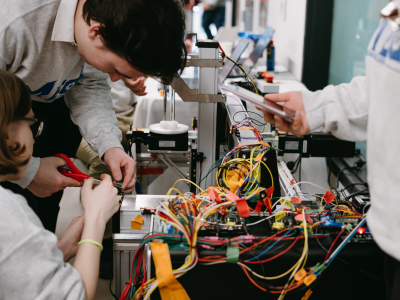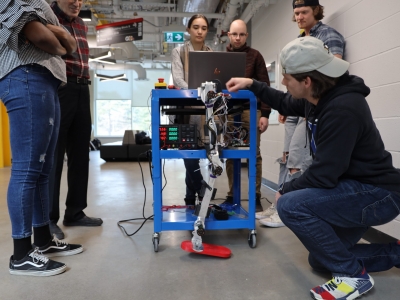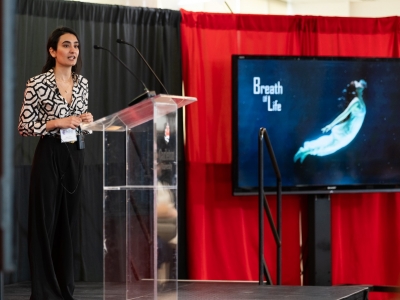Alim Baytekin, Alborz Erfani, Natalie Levasseur and Tim Inglis, supervised by Leonard MacEachern, developed a low-cost 3D-printed prosthetic hand with intelligent EMG control as their capstone project. The Department of Electronics undergraduate team won the 2013 IDeA competition for the prototype prosthetic hand, and earned funding to continue research over the summer.
Thanks to a donation by Tom Skinner, MEng/72, who donated funds to run a two-year pilot project that will help engineering students begin to commercialize a fourth-year group project, Inglis and Baytekin will be able to take the project further. Inglis also received a Wes Nicol award through Carleton Entrepreneurs to explore commercialization of the technology. The project previously won the Professional Engineers Ontario (PEO) competition this year.
With the cost of a modern myoelectric prosthetic hand in Canada ranging from $15,000 to $50,000, cost is a significant barrier to ownership for many amputees in Canada and abroad. Additionally, hand functionality is limited among these more moderately priced devices. Many of these hands only have the ability to open and close in a single grip. Higher functionality, such as independently actuated fingers capable of many grips comes at an even higher price.
The team focused on designing an afforable prosthetic with emphasis on the design of the mechanical hand, intelligent motor control logic, haptic feedback implementation, and integration of all of the individual system components into a functional prototype.
To develop an inexpensive electromechanical hand that was a reasonable analog of a human hand and an inexpensive EMG-based control platform, the team decided that the mechanical hand components should be created using a 3D printer. The EMG control platform is comprised of inexpensive, readily available components.
The 3D-printed hand prototype was modeled, printed and assembled for less than $250. The hand contains over 30 components, including 15 unique printed components. It is actuated with high-torque hobby servos that are controlled by pulse width modulated (PWM) signals regulated by the microcontroller. The EMG interface works by acquiring differential signals from muscle impulses in the residual limb of the user. Those signals are then amplified, and passed to a high-resolution analog to digital converter (ADC). The ADC then outputs the signals over aserial peripheral interface (SPI) to the microcontroller. Control logic embedded in the microcontroller captures combinations of muscle impulses. A pressure sensor on the gripping surface of the prosthetic thumb provides feedback to the microcontroller to control the pressure applied when the prosthetic hand grips an object. A haptic feedback system creates vibration in response to a successfully received command.
The prosthetic hand is nimble when it comes to opening doors or picking up small items, such as eggs. It has a firm, but non-crushing grip.
The control system is customizable for each user. A child who receives her first myoelectric arm at the age of three will use a simple control scheme that requires one or two electrodes and only a single opcode. As the child grows, she will be able to incrementally increase the number of channels and the number of opcodes used, increasing the functionality of her hand.



